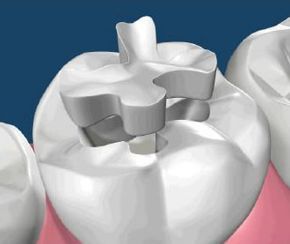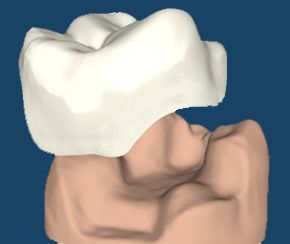Inlays and Onlays
When there is a lot of tooth structure missing, Dr. Bruce will often use an inlay or an onlay to restore your tooth.
What are inlays and onlays?
Inlays and onlays differ from ordinary fillings in that they are made in a dental laboratory. That means that the dentist and dental technician have more complete control of the shape of the filling, and the filling can be made out of cast gold or fired porcelain, which are both extremely durable materials. An inlay sits inside the tooth and is very similar to a filling.
An onlay covers most or all of the chewing surface of your tooth. It is similar to a dental crown. A dental crown, however, will cover all of the tooth. An onlay will only cover the weakened or broken parts of the tooth, so it is a more conservative restoration.In recent years, gold is being used less and less and porcelain has become more popular.


How are they applied?
Inlays and onlays require two appointments. In the first appointment, the tooth is prepared, an impression is taken, and a temporary filling is placed. The impression is sent to a dental laboratory technician who fabricates the restoration. At the second appointment, Dr. Bruce removes the temporary filling and then fits the onlay. If the fit is correct, he will then bond the inlay or onlay to the tooth.
Inlays and Onlays compared to fillings
Traditional silver/mercury amalgam fillings can reduce the strength of a tooth up to 50 percent. A bonded inlay or onlay will actually increase the strength of your tooth, thus protecting it from breakage. Expect this type of restoration to last from 10 to 30 years.